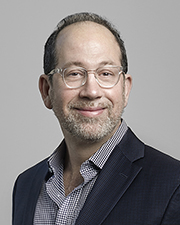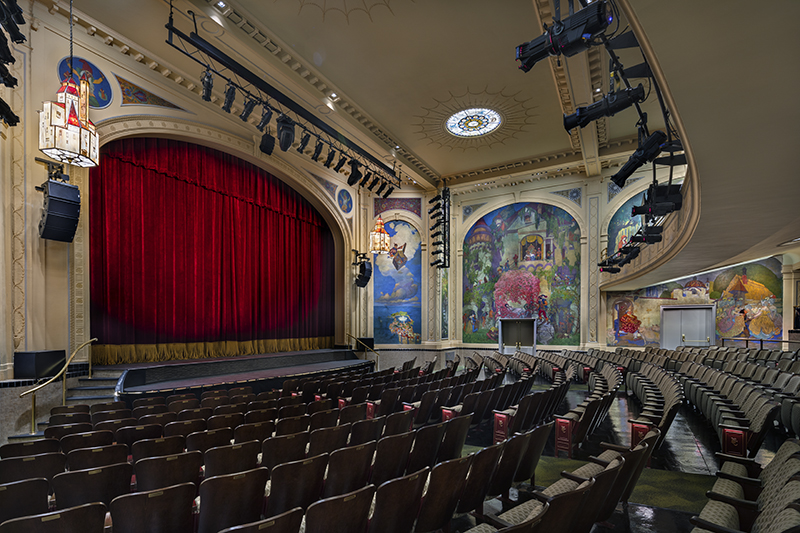Executive of the Month: David Katz, principal and founder of Katz Architecture: Expert designer and problem solver

Katz Architecture
New York, NY The New York Real Estate Journal recently sat down with David Katz, principal and founder of Katz Architecture for a question and answer session.
Q: What are some of your most notable projects at Katz Architecture?
A: We recently completed the restoration of a magnificent 600-seat theater space for El Museo del Barrio. The space dates back to the 1920’s and has a beautiful proscenium arched stage, a number of extraordinary hand painted murals, and custom stained glass light fixtures. We restored the space, upgraded the theater systems, expanded the orchestra pit, and added a new orchestra pit elevator. Another notable project was the conversion, renovation, and expansion of a 10-story Midtown residential landmark building for commercial use. That was a very complex project that involved completely replacing the building’s utilities, adding an elevator, infilling the lightwells on either side of the building and adding a penthouse. On a smaller scale, one of my favorite projects was the Sundaram Tagore Gallery in Chelsea, which was originally a taxi garage. That project, which succinctly illustrates our approach to renovation projects, maintains and highlights a lot of the older fabric while introducing modern elements to suit the new program.
Q: How does your professional background bring a unique point of view to your company?
A: Throughout my career, I have always been drawn to both the design and technical side of building, and have pursued positions that have emphasized both. I have also had the good fortune of working on a large variety of older structures and as a result developed a strong understanding and appreciation for historic and landmark buildings. My knowledge of building systems and the renovation, maintenance, and repair of older buildings was the basis of my practice from the beginning and it is something I have very actively nurtured over the years with my staff. Our reputation as architectural problem solvers is a testament to that.
Q: What are your favorite project types to work on and why?
A: Over the years, my office has evolved to provide two general types of services – full service architectural design and building management support services. These two disciplines come directly out of my personal interest in the design and technical sides of building and so I very much enjoy working on both. I also enjoy the variety of scales.
On the design side, we’ve done building expansions, corporate offices, townhouses, apartment combos and retail spaces. The building management support services are tailored to property managers, coop, and condo boards and include projects such as façade restoration, sidewalk vault repair, roof replacement, mechanical systems upgrades, physical conditions surveys as well as general building architect services. In both cases, my office has become expert in the renovation, restoration, preservation, and maintenance of historic building types.
But we are always expanding our knowledge and for an office of our size we are remarkably agile, able to work on anything from analytical technical exercises to complex multimillion dollar projects. This year we have two ground up buildings on the boards.

Q: What’s the most interesting project you’ve worked on in the past year?
A: We have had the luxury of working on several wonderful projects this year. We are honored to work on a new house in Tuxedo Park, NY, a historic enclave on three lakes up in Orange County. A number of the houses up there date back to the 1800’s and were designed by well-known architects such as McKim Mead & White, John Russel Pope, Carrere & Hastings and Bruce Price. That’s some stiff competition! The exterior of the house had to go through a rigorous review process by the local Board of Architectural Review. Responding to the historic architecture of the area, the house we are doing is a shingle style building with a rusticated granite base, multiple fireplaces, and a multi-gabled roof. It sits directly on the lake and will have a magnificent landscape that tumbles down to the water. Because the interior is not guided by the same aesthetic restrictions, it will be decisively more modern in character, which makes for a very interesting project.
I am also very excited to be working on a new 15,000 s/f commercial building. Located on a prominent corner site in the center of the SoHo Cast Iron Historic District, the building will feature a muscular structural skeleton and large windows to draw in as much light as possible. It is a very exciting project to work on and we are in the process of obtaining approvals from the Landmarks Preservation Commission.
Q: What are some of the most important career lessons you’ve learned? Who are some of your role models?
A: The first career lesson I learned is that just because you want to do something doesn’t mean that people will necessarily pay you to do it! As every architecture student, I came out of school with an idealized vision of the profession, thinking I would be spending all my time designing beautiful things. In fact, there is a lot more to it than that, and I learned that lesson very quickly. Likewise, I learned that I obtain the greatest joy when I find satisfaction in what satisfies my clients. To survive in the profession, I found it necessary to identify the needs of the market and then cultivate the skills and knowledge necessary to serve those needs. I also learned how satisfying it is to be part of a team. Over the years, I have worked hard to hone the process of collaborating effectively between my staff, very skilled consultants, experienced builders, and talented craftsmen. Our clients also play a key role in the process. We are not ego-driven. We like to be part of a group that together solves problems.
I have had the good fortune of working with some great people. Murry Gelberg is someone who stands out as a role model. I met Murry in 1985 when I began working in his office. I was a student a Cooper Union and had never experienced a working environment infused with such design passion. This was all Murry’s doing. He brought immense joy to the process of creating things. We were all visual thinkers, but Murry involved all the senses. Everything was approached with the same seriousness of purpose, whether it was drawing a floor plan or arranging a plate of cookies.
Murry filled the office with wonderful people whose passion for design he cultivated. He created a studio that encouraged everyone to take pride and pleasure in their work. He surrounded the space with beautiful objects and images. The shelves were arranged to inspire all who entered. Even the coffee was chosen to best suit the atmosphere. None of this is to suggest that he was a micromanager. He motivated our creativity and took great pleasure in seeing what others produced. He would talk about spirit and soul and how important it was to do good work not so much for our clients as for ourselves.
“It’s in our DNA!” he would exclaim. I modeled my office after Murry’s and channel him often.
Q: What are some of the most important lessons you’ve learned from the people you work with?
A: I am extraordinarily proud of my staff, all of whom work very hard and are very good at what they do. Over the years, I have found that people are motivated by learning and open communication, and that if people feel good about their environment, they feel good about themselves and they work harder. They also feel a sense of ownership to the work, which is significant. We foster critical thinking and honesty and my clients respond to this.
The quality and atmosphere in my office is as important as the work. I want it to be an uplifting, nurturing environment where people feel inspired. I have an open door policy and I encourage my staff to speak with me if something isn’t working. There is so much to learn in this field, and we are all constantly learning. Not every job is going to be thoroughly fascinating, but my senior staff and I actively encourage the juniors to see that every project offers something valuable to learn. We spend a lot of time mentoring the staff and meet regularly to share knowledge and discuss problems that come up on each of the projects. We offer public speaking and writing classes to improve communication and leadership skills. We have fun too. Every Friday, without fail, we have a happy hour and invite guests. We also laugh a lot which is important, because the type of work we do can be very stressful at times. Right now, my office has some incredible talent, but they are also an extraordinary group of warm, intelligent people. I am just so happy to go into the office every day and see their faces.
Q: Who has had the biggest impact on you and why?
A: My parents, who were first generation children of Eastern European immigrants, worked very hard to allow me and my siblings the luxury of pursuing our goals. They grew up in very modest households in Paterson, NJ. We grew up in Mt. Vernon, NY. My father began his career as an engineer, but driven to work for himself, founded his own insurance agency. My mom worked as a dental hygienist. They encouraged us all to develop a strong work ethic and to treat people well. Both were active in the community and in our education. My mother served several years as the president of the PTA and my father as the president of the board of education.
I am fortunate to say that I still rely on them to help me through difficulties when they arise. My father is an intellect and one of the smartest guys I know. My mom is loved by everyone because of her ability to instantly connect emotionally. I am sure that is why I was drawn to architecture - a field that is both logical and poetic.
Q: Is there a project you’re particularly proud of and why?
A: More than any individual project, I am extraordinarily proud – and thankful – for the success we have seen, and for the wonderful relationships with clients, consultants, builders and employees that have been forged over the years as a result. It is a great feeling to look back after plugging away for 17 years and say, I’m happy I did this.
Troutbrook expands with boutique condo project and Marriott Fairfield Inn & Suites renovation








.gif)
.jpg)
.gif)
.gif)